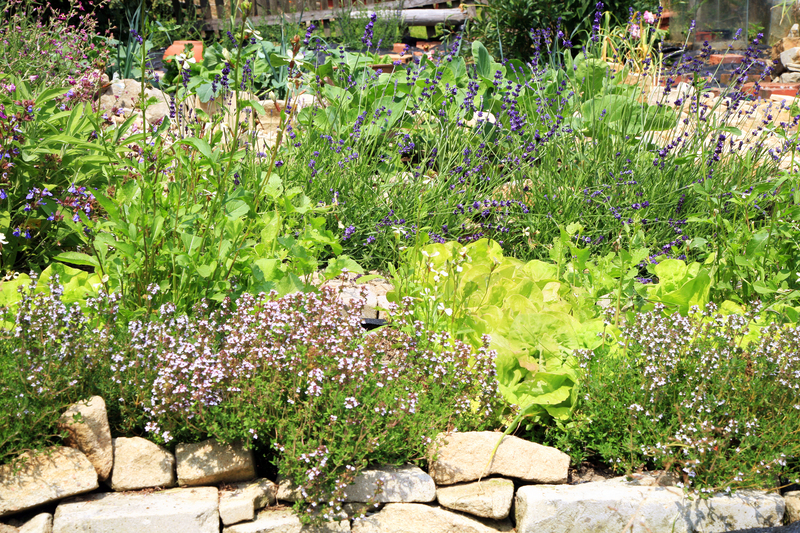Top Techniques to Eliminate Unwanted Tree Stumps Efficiently
Unwanted tree stumps can be a major eyesore in a garden or yard, as well as a hazard to both safety and lawn care equipment. Eliminating these stumps not only enhances the aesthetic appeal of your landscape but also helps prevent pest infestations and the regrowth of unsightly shoots. In this comprehensive guide, we'll explore the best methods to remove tree stumps quickly, safely, and efficiently. Whether you prefer hands-on techniques or professional solutions, you'll find everything you need to know about tree stump removal right here.

Why It's Important to Remove Tree Stumps
- Improved Aesthetic Appeal: Exposed tree stumps detract from the neat appearance of your garden or lawn.
- Safety Hazards: Stumps can cause trips, falls, and damage to lawn mowers and other garden equipment.
- Pest Prevention: Rotting stumps can attract termites, ants, beetles, and other pests that can invade healthy trees or even homes.
- Preventing Regrowth: Many species of trees sprout new growth from a cut stump, leading to recurring maintenance.
- Space Utilization: Removing stumps creates usable land area for new plants, landscaping, or construction.
Key Factors Before Choosing a Stump Removal Technique
Before embarking on your tree stump elimination project, consider the following:
- Size and Age of Stump: Older or larger stumps may require more advanced removal methods.
- Root System Depth: Deep and extensive roots can complicate removal.
- Type of Tree: Some species have tougher wood or roots that are more persistent.
- Cost and Time: Manual techniques are often cheaper but require more effort and time, while machinery is faster but can be expensive.
- Safety Considerations: Always consider the risks of using power tools, chemicals, or fire.
- Environmental Impact: Some methods are more eco-friendly than others.
Top Techniques to Quickly and Efficiently Remove Tree Stumps
There are several effective approaches for tree stump removal. Choosing the best method depends on your budget, available tools, the size of the stump, and how quickly you need the job done. Here are the leading techniques:
1. Stump Grinding: The Professional Standard
Stump grinding is widely regarded as the fastest and most efficient way to eliminate tree stumps. This method involves using a specialized machine called a stump grinder, which comes equipped with a sharp rotating blade that chips away at wood until the stump is ground below the soil surface.
- Process: The grinder is positioned over the stump, and the rotating blade is guided back and forth to pulverize the wood and connected roots.
- Depth: Most grinders can reduce a stump to 6-12 inches below ground level, allowing you to replant or resurface the area easily.
- Debris: The resulting wood chips and sawdust can be used as mulch or removed.
- Duration: Stump grinding typically takes less than an hour per stump, depending on size.
Pros:
- Quick and highly effective for stumps of all sizes
- Minimal disturbance to surrounding soil and landscaping
- No use of chemicals
Cons:
- Equipment rental/contractor costs can be high
- Professional handling is often required for large or hard-to-reach stumps
2. Manual Digging: Traditional and Eco-Friendly
For environmentally conscious homeowners or those wanting a cost-effective solution, digging out a stump by hand is a classic method. This approach works best for small to medium-sized stumps.
- Tools Needed: Shovel, mattock, axe, hand saw, pruning shears, and possibly a steel bar or chain.
- Steps:
- Start by clearing soil from around the stump to expose main roots.
- Cut through roots using the mattock, axe, or saw.
- Rock the stump back and forth until it loosens, then pry it out.
- Duration: Can take several hours or more, depending on the stump size and root complexity.
Benefits:
- Zero cost except basic tools
- Exercise and hands-on satisfaction
- No chemicals or machinery involved
Drawbacks:
- Labor-intensive and time-consuming for larger stumps
- Potential for injury if not careful with tools
3. Chemical Stump Removers: Let Nature Do the Work
A less intensive but slower method is to use chemical stump removal products, which accelerate the natural decay process by softening the wood.
- Products: Most stump killers use potassium nitrate as the active ingredient.
- Instructions:
- Drill several deep holes into the stump using a large drill bit.
- Fill the holes with water and pour in the chemical stump remover.
- Allow the product to soak in and break down the wood over 4-6 weeks or more.
- When the stump becomes soft, it can be chopped out or may decompose naturally.
Advantages:
- Low physical effort required
- Affordable and widely available
Disadvantages:
- Slow process; not suitable for those wanting immediate results
- Some chemicals can be harmful to pets, children, or surrounding plants
4. Burning Out a Tree Stump: Fast, but Risky
Removing a tree stump by burning is a favored technique in areas where fire regulations allow. This process is effective for seasoned, dry stumps but should always be approached with caution.
- Preparation:
- Drill holes into the stump and fill with potassium nitrate to increase flammability.
- Pour kerosene or fuel oil (never gasoline) into the holes and allow to soak for several days.
- Ignite the stump safely and monitor until the wood is reduced to ash.
- Aftercare: Fill the resulting hole with soil or plant grass over the area.
Perks:
- Effective at eliminating stumps completely
- Faster than chemical methods, especially for smaller stumps
Risks:
- Fire hazard - should NOT be attempted in dry or fire-prone regions
- Can release smoke and pollutants
- May not fully remove very large or green stumps
5. Rotting and Natural Decomposition: Patience is Key
If you aren't in a hurry, allowing the stump to decompose naturally is an eco-friendly and simple approach. This method can be hastened by boosting microbial and fungal activity.
- Process:
- Keep the stump moist and covered with soil, compost, or mulch to encourage decay.
- Add nitrogen-rich materials (e.g., fertilizer or manure) or commercial decomposition accelerators.
- Drilling holes into the stump provides channels for organisms to speed up the process.
- Over 1-3 years, the stump will break down and can be removed with minimal effort.
Highlights:
- Low cost and environmentally safe
- No physical or chemical hazards
Limitations:
- Requires a lot of patience
- Stump may become a temporary habitat for pests
6. Excavation with Heavy Machinery: For Difficult or Multiple Stumps
For large tree stump removal jobs, such as clearing a construction site, mechanical excavation is the most efficient.
- Equipment: Mini-excavators, backhoes, or skid steers can dig up multiple stumps quickly.
- Process: Machines are used to expose roots, dislodge the stump, and remove it entirely from the ground.
- Duration: Fast, but may require professional operators and access for large machinery.
Advantages:
- Handles even the biggest and most deep-rooted stumps
- Ideal for clearing land of multiple obstacles
Drawbacks:
- High equipment and operator costs
- Can cause significant disturbance to soil and surrounding landscape
Additional Methods and Stump Removal Tips
- Winching: For stubborn or medium-sized stumps, a vehicle or hand-operated winch can pull the stump out after cutting most of the roots.
- Epsom Salt Remedy: Epsom salt draws moisture out of the stump, speeding decay (drill holes, fill with salt, keep moist).
- Enlist Nature: Fungi and bacteria are nature's decomposers -- inoculate the stump with mushroom spawn to accelerate natural decay.
- Reuse Rather Than Remove: Hollow out a stump and use it as a planter, fairy garden, or natural sculpture if removal isn't essential.
Safety First! Essential Precautions During Stump Elimination
- Wear protective gear: Gloves, goggles, sturdy boots, and long sleeves are recommended, especially when using tools or power equipment.
- Check regulations: Always review local by-laws or fire codes regarding burning stumps or using particular chemicals.
- Be mindful of underground utilities: Call utility companies to mark cables or pipes before any digging or grinding.
- Dispose responsibly: Compost wood chips or debris if possible, or arrange for proper waste removal.
When to Hire a Professional Tree Stump Removal Service?
While many tree stump removal methods are DIY-friendly, it's wise to call a professional if:
- The stump is exceptionally large or located near structures or underground utilities.
- You lack the necessary equipment or experience.
- Fast, guaranteed results are required (for real estate sales, new construction, etc.).
- Pest infestations (like termites or fungi) are a concern.
Professional services bring expertise and specialized equipment to safely and efficiently remove even the toughest stumps, leaving your yard clean and ready for the next project.

Frequently Asked Questions About Eliminating Tree Stumps
How long does it take to remove a tree stump?
Manual or chemical methods can take weeks to months, while commercial grinding or excavation can eliminate most stumps in under an hour.
Does stump removal impact future planting?
Efficient stump removal, especially grinding, allows for immediate replanting, landscaping, or construction with minimal disruption to your soil.
Are stump removal chemicals safe?
Most products are safe when used correctly, but keep pets and children away, and check that chemicals will not affect wanted plants nearby.
Can you leave stumps to rot?
Yes, though this process is slow and may attract pests, so acceleration techniques are recommended if you go this route.
Conclusion: Choose the Best Stump Removal Method for Your Yard
In summary, eliminating unwanted tree stumps quickly and efficiently requires the right approach for your unique situation. Stump grinding offers the fastest, cleanest results, while manual digging is a rugged DIY choice. Chemical and natural decomposition methods are low-effort but slow, and burning or heavy machinery may be suitable in specific cases. Whether you're restoring your lawn's beauty or preparing land for a new use, these tree stump removal techniques can help keep your property safe, attractive, and functional.
Remember: Always put safety first, consider your landscape needs, and when in doubt, consult a professional for tree stump elimination. Your perfect yard is just one step away!